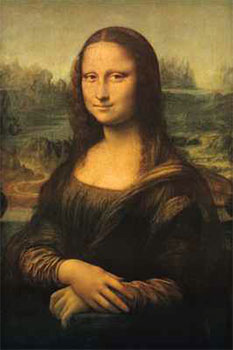Congratulations to Professor Tom Henry who has been awarded a two-year funding grant from the prestigious Kress Foundation to be the lead investigator on a project to develop a website for the publication of Italian Renaissance art-historical documentation.
The need for this site arises from a crushing contradiction: that primary documentation is fundamental to the study of the history of art, and yet publishers do not want to publish long documentary appendices. This alone would justify electronic publication, but a database website has four distinct advantages: the ability to cope with a large volume of material, the ability to fully search all that material (with significant research benefits), the fluidity of the medium (which can take account of improvements to transcriptions), and the possibility to compare transcriptions with photographs of the documents.
This project will make a wide body of published and unpublished primary sources (e.g. tax records, notarial documents, private and corporate account books, civic documents, letters, poems, inscriptions etc) for the study of Italian Renaissance art available to scholars and students worldwide via web publication, facilitating comparative study in a way that has never previously been possible. The project will concentrate on a group of fifteenth-century artists (the selection is discussed below), but the principles apply to a much wider body of material and there is no reason why the project should not continue to grow over time.
Project description:
It has long been recognised that the surviving, known, documentation for renaissance artists is a fundamental tool for the study of Italian Renaissance art. From the mid-nineteenth century and especially at the beginning of the twentieth century, archival scholars greatly expanded knowledge of Italian renaissance artists through the publication of documents, sometimes monographically, sometimes in selections based on various criteria (often local). Subsequent scholarship has relied upon these studies, and has continued to add newly discovered documents or new and improved transcriptions of known documents. In our efforts to understand the achievements of this period some of the best scholarship has sought to analyse particular terms or identify patterns. But scholarship always moves on and each generation asks slightly different questions than the last and returns to the corpus of documentation with new demands and in pursuit of new conclusions.
An example of this is how in the 1960s there was intense study of ‘sua mano’ clauses, in the 1990s particular interest in the use of terms such as ‘pala’ and ‘cartone’, and in the 2000s subset terms such as ‘predella’ and its variants. As things stand this type of study can only be undertaken by someone who has all the documentation at their fingertips. Flexible web publication of this type of source material facilitates comparative and analytical study, and there are some excellent archival projects which have published material that they either own or have special access to (the Cupola project at the Opera del Duomo, or the Medici archive project, both in Florence; or the Accademia di San Luca project at CASVA). What marks out this proposal is that its intention is more wide-ranging and more mainstream, and the completed resource would be a tool for scholars and students of Central Italian art which would be used, useful and offer research results from the moment it was uploaded.
As an example in my current research I have identified that at least two Central Italian artists (Signorelli and Giulio Romano) presented their artistic successor with a dark cloak. It is my premise that this practice was widespread (I have now been able to add a Venetian example: Francesco Mirosei), and with further library-based research into published wills by renaissance artists, I would be able to establish if there are further cases. This would be a fairly time-consuming process, but would be a question that computing power would answer very easily – so long as the datasets were available and searchable. Similarly I am interested to identify the relative cost of various types of picture in Italy across time and in a series of places (M. O’Malley’s The Business of Art attempts this, but on the basis of a necessarily limited sample). The resource I describe here would greatly facilitate these kinds of research (and others as yet unimagined).
The proposal is, then, to create a fully searchable database of transcriptions of the complete known documentation for a group of Central Italian artists of the Renaissance; to make this material available to a wider audience, and to facilitate comparative study of the period and its principal artists. It will be based on an expansion of the existing archival website http://archive.casanovaumbria.eu which I published in May 2012 to coincide with the publication of my book The Life and Art of Luca Signorelli. This website was based on Open Source software and has existing data-entry pages and editing facilities (the proposal includes a budget for further software consultancy to modify the data input pages as necessary for an expanded resource, and for systematised data backup and hosting), as well as its publicly visible pages with all the known documentation for Signorelli’s life and art.

